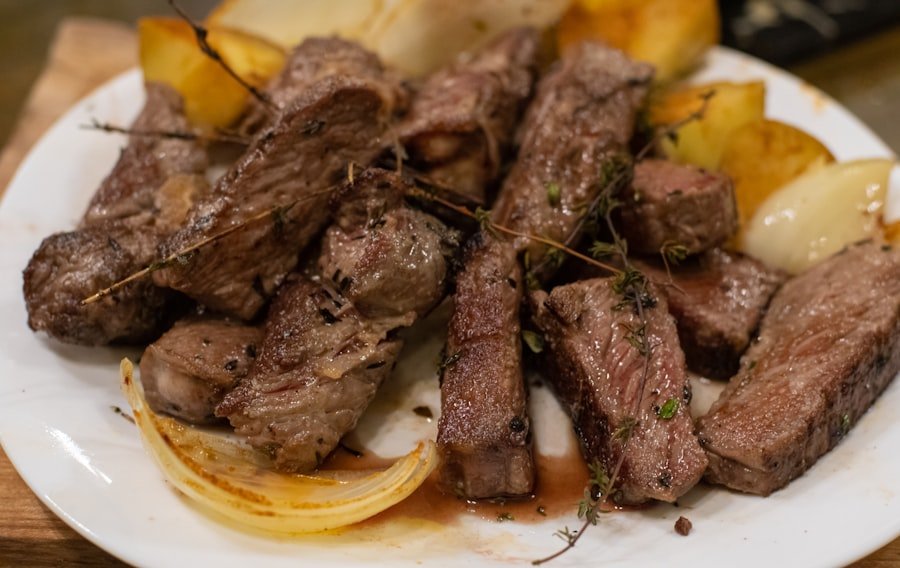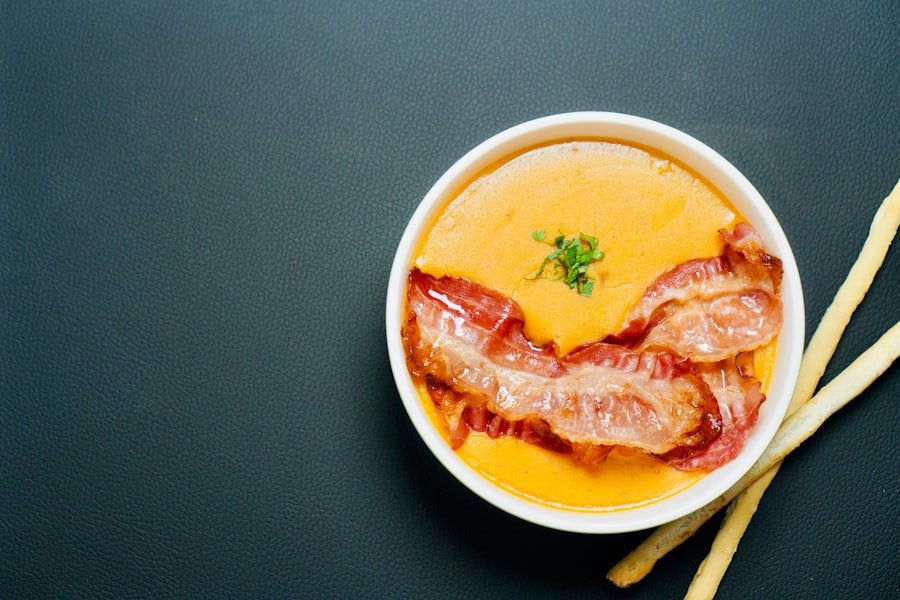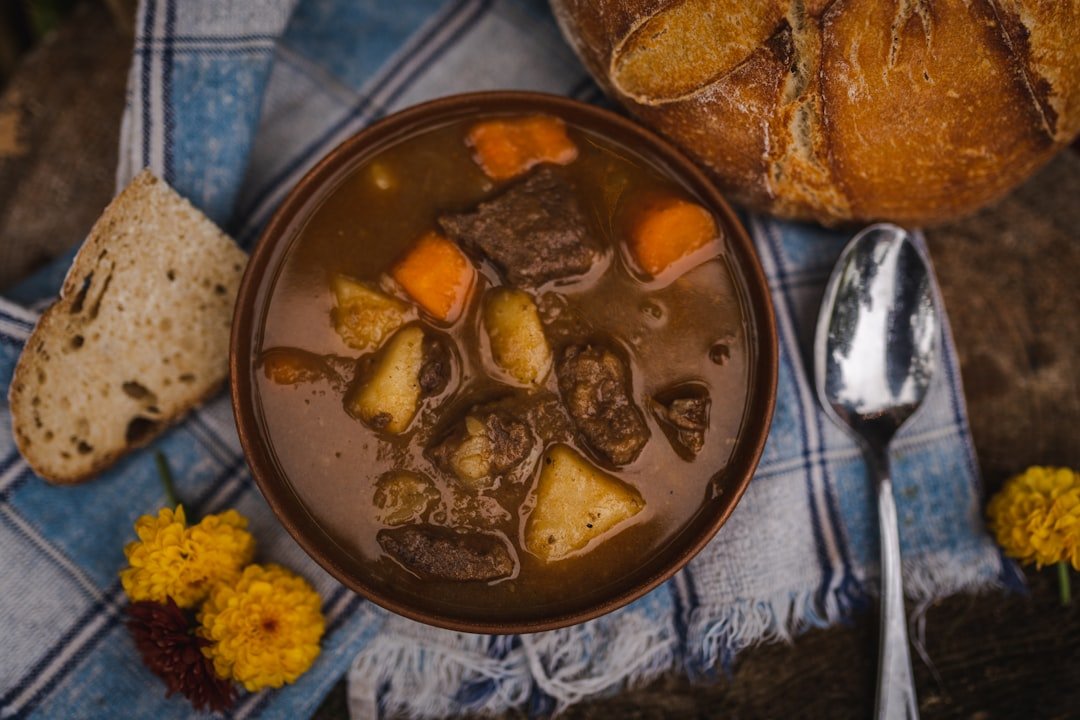Cabo Verde, an archipelago nestled in the Atlantic Ocean, boasts a culinary landscape that is as vibrant and diverse as its culture. As we embark on a journey through the flavors of this island nation, we find ourselves immersed in a rich tapestry woven from the threads of history, geography, and the fusion of various culinary traditions. The cuisine of Cabo Verde is not merely about sustenance; it is a celebration of the islands’ heritage, a reflection of the people’s resilience, and a testament to their creativity in the kitchen.
The islands’ unique geographical position has made them a melting pot of influences, where African, Portuguese, and Brazilian flavors converge. This blend creates a distinctive culinary identity that is both comforting and exciting. As we explore Cabo Verdean cuisine, we will discover how local ingredients are transformed into mouthwatering dishes that tell stories of the islands’ past and present.
From hearty stews to fresh seafood, each meal is an invitation to experience the warmth and hospitality of the Cabo Verdean people.
Key Takeaways
- Cabo Verde cuisine is a unique blend of African, Portuguese, and Brazilian flavors, reflecting the country’s rich history and cultural influences.
- Must-try dishes in Cabo Verde include Cachupa, a hearty stew, and Pastel com Ovo, a popular street food snack.
- Seafood delights are abundant in Cabo Verde, with fresh catches and grilled specialties such as grilled lobster and tuna steaks.
- Vegetarian and vegan options in Cabo Verde are flavorful and satisfying, with dishes like vegetable stew and fried plantains.
- Indulge in local delicacies with sweet treats and desserts such as Bolo de Banana (banana cake) and Queijada (cheese tart).
The Influence of African, Portuguese, and Brazilian Flavors
The culinary landscape of Cabo Verde is deeply rooted in its history, shaped by the waves of migration and colonization that have influenced the islands over centuries. African traditions play a significant role in the local cuisine, with ingredients such as corn, beans, and sweet potatoes forming the backbone of many dishes. These staples are often combined with spices and herbs that reflect the rich agricultural practices of the islands.
As we delve into the flavors of Cabo Verde, we can taste the essence of Africa in every bite. Portuguese colonization introduced new ingredients and cooking techniques that have become integral to Cabo Verdean cuisine. The use of olive oil, garlic, and onions is prevalent in many traditional recipes, adding depth and richness to the dishes.
Additionally, the Portuguese brought with them a love for seafood, which has been embraced by the islanders and incorporated into their culinary repertoire. The influence of Brazilian cuisine is also evident, particularly in the use of tropical fruits and spices that enhance the vibrant flavors found in Cabo Verdean dishes. This fusion creates a unique gastronomic experience that reflects the islands’ diverse cultural heritage.
Must-Try Dishes in Cabo Verde

As we navigate through Cabo Verde’s culinary offerings, there are several must-try dishes that stand out as quintessential representations of the islands’ flavors. One such dish is “catchupa,” a hearty stew made with corn, beans, and a variety of meats or fish. This dish is often considered the national dish of Cabo Verde and is a staple at family gatherings and celebrations.
Each island has its own variation of catchupa, showcasing local ingredients and cooking styles that make it a unique experience no matter where we enjoy it. Another dish that deserves our attention is “pastel com diabo dentro,” which translates to “pastry with the devil inside.” This savory pastry is filled with spicy tuna or other meats and is a popular street food snack. The crispy exterior combined with the flavorful filling makes it an irresistible treat for anyone exploring Cabo Verde’s culinary scene.
Additionally, we cannot overlook “bifana,” a marinated pork sandwich that has become a beloved comfort food among locals and visitors alike. Each bite offers a taste of Cabo Verde’s rich culinary heritage while satisfying our cravings for something hearty and delicious.
Seafood Delights: Fresh Catches and Grilled Specialties
| Menu Item | Price | Calories | Protein (g) |
|---|---|---|---|
| Grilled Salmon | 18.99 | 350 | 25 |
| Shrimp Scampi | 16.99 | 280 | 20 |
| Fried Calamari | 12.99 | 320 | 15 |
| Grilled Swordfish | 22.99 | 400 | 30 |
Given its location in the Atlantic Ocean, it comes as no surprise that seafood plays a central role in Cabo Verdean cuisine. The islands are surrounded by bountiful waters teeming with fish and shellfish, making fresh catches readily available for local chefs and home cooks alike. As we explore Cabo Verde’s seafood offerings, we are treated to an array of flavors that highlight the freshness of the ocean.
One of the standout seafood dishes we must try is “lagosta grelhada,” or grilled lobster. This delicacy is often prepared simply with garlic butter and served with rice or salad, allowing the natural sweetness of the lobster to shine through. The experience of savoring grilled lobster while overlooking the ocean is truly unforgettable.
Additionally, “peixe grelhado,” or grilled fish, is another popular choice among locals. The fish is typically marinated with lemon juice and spices before being grilled to perfection, resulting in a dish that is both flavorful and satisfying.
Vegetarian and Vegan Options: Flavorful and Satisfying
While seafood may dominate the culinary scene in Cabo Verde, there are plenty of vegetarian and vegan options that showcase the islands’ agricultural bounty. As we explore these plant-based dishes, we discover that they are not only flavorful but also deeply rooted in local traditions. Staples such as beans, corn, and vegetables are transformed into hearty meals that cater to those seeking meat-free options.
One popular vegetarian dish is “feijoada,” a bean stew that can be made with or without meat. This comforting dish is often served with rice and provides a satisfying meal for anyone looking to indulge in local flavors without compromising their dietary preferences. Additionally, “batata doce,” or sweet potatoes, are commonly used in various dishes, whether roasted or mashed, adding a touch of sweetness to our meals.
The creativity of Cabo Verdean cooks ensures that even those following vegetarian or vegan diets can enjoy delicious and satisfying meals while experiencing the rich culinary heritage of the islands.
Sweet Treats and Desserts: Indulge in Local Delicacies

No exploration of Cabo Verdean cuisine would be complete without indulging in its sweet treats and desserts. The islands offer a delightful array of confections that reflect both local ingredients and Portuguese influences. As we satisfy our sweet tooth, we find ourselves immersed in flavors that evoke nostalgia and warmth.
One beloved dessert is “pudim de leite,” a creamy caramel flan made from condensed milk and eggs.
Another popular option is “bolo de banana,” or banana cake, which showcases the abundance of ripe bananas found on the islands.
The moist cake is often spiced with cinnamon or nutmeg, creating a comforting dessert that pairs beautifully with a cup of coffee or tea. As we savor these sweet delights, we are reminded of the importance of sharing food with loved ones—a cherished tradition in Cabo Verdean culture.
Traditional Beverages: From Refreshing Juices to Strong Spirits
To complement our culinary journey through Cabo Verde, we must also explore the traditional beverages that accompany these delicious dishes. The islands are known for their refreshing fruit juices made from locally grown tropical fruits such as papaya, mango, and passion fruit. These juices are not only thirst-quenching but also provide a burst of flavor that enhances our dining experience.
For those seeking something stronger, “grogue” is a traditional spirit made from sugarcane.
Grogue can be sipped neat or used as a base for cocktails that showcase local flavors.
As we raise our glasses to toast to our culinary adventures, we find ourselves immersed in the spirit of Cabo Verde—one that celebrates community, tradition, and the joy of sharing good food.
Exploring Cabo Verde Cuisine: Culinary Tours and Cooking Classes
For those eager to dive deeper into Cabo Verdean cuisine, participating in culinary tours or cooking classes offers an immersive experience that goes beyond simply tasting food. These activities allow us to connect with local chefs and home cooks who are passionate about sharing their knowledge and skills. Through hands-on experiences, we can learn about traditional cooking techniques while gaining insight into the cultural significance behind each dish.
Culinary tours often take us through bustling markets where we can discover fresh ingredients while interacting with local vendors. We may also have the opportunity to visit family homes where traditional meals are prepared using age-old recipes passed down through generations. Cooking classes provide an intimate setting where we can roll up our sleeves and create our own versions of beloved dishes under the guidance of experienced instructors.
By engaging with Cabo Verdean cuisine in this way, we not only enhance our culinary skills but also forge meaningful connections with the people and culture of this beautiful archipelago. In conclusion, exploring Cabo Verdean cuisine is an enriching experience that allows us to appreciate the islands’ diverse flavors and cultural heritage. From hearty stews to fresh seafood delights, each dish tells a story that reflects the resilience and creativity of its people.
Whether we are indulging in sweet treats or sipping on traditional beverages, every bite brings us closer to understanding what makes Cabo Verde’s culinary landscape so unique. As we embark on this gastronomic journey together, we celebrate not only the food but also the connections forged through shared meals—a true testament to the spirit of Cabo Verde.
If you’re interested in learning more about the cuisine of Cabo Verde, be sure to check out the article on cabo-adventures.net. This article provides a detailed look at the traditional dishes and flavors of the islands, giving you a taste of what to expect when dining in Cabo Verde. Whether you’re a foodie looking to explore new culinary experiences or simply curious about the local cuisine, this article is a great resource for learning more about the delicious food of Cabo Verde.
FAQs
What is Cabo Verde food?
Cabo Verde food refers to the cuisine of the Cape Verde islands, which is a blend of African, Portuguese, and Brazilian influences. It features a variety of seafood, stews, and corn-based dishes.
What are some popular dishes in Cabo Verde?
Some popular dishes in Cabo Verde include Cachupa (a stew made with corn, beans, and fish or meat), Canja (chicken soup with rice), and Pastel com diablo dentro (pastry filled with spicy tuna).
What are the main ingredients used in Cabo Verde food?
The main ingredients used in Cabo Verde food include seafood (such as tuna, lobster, and octopus), corn, beans, rice, and a variety of spices and herbs.
Is Cabo Verde food spicy?
Cabo Verde food can be spicy, as it often incorporates hot peppers and other spices. However, not all dishes are necessarily spicy, and the level of spiciness can vary depending on the specific dish and the cook’s preferences.
Are there any vegetarian or vegan options in Cabo Verde food?
Yes, there are vegetarian and vegan options in Cabo Verde food, such as vegetable stews, rice dishes, and fried plantains. However, it’s important to communicate dietary preferences to ensure that dishes are prepared without animal products.



